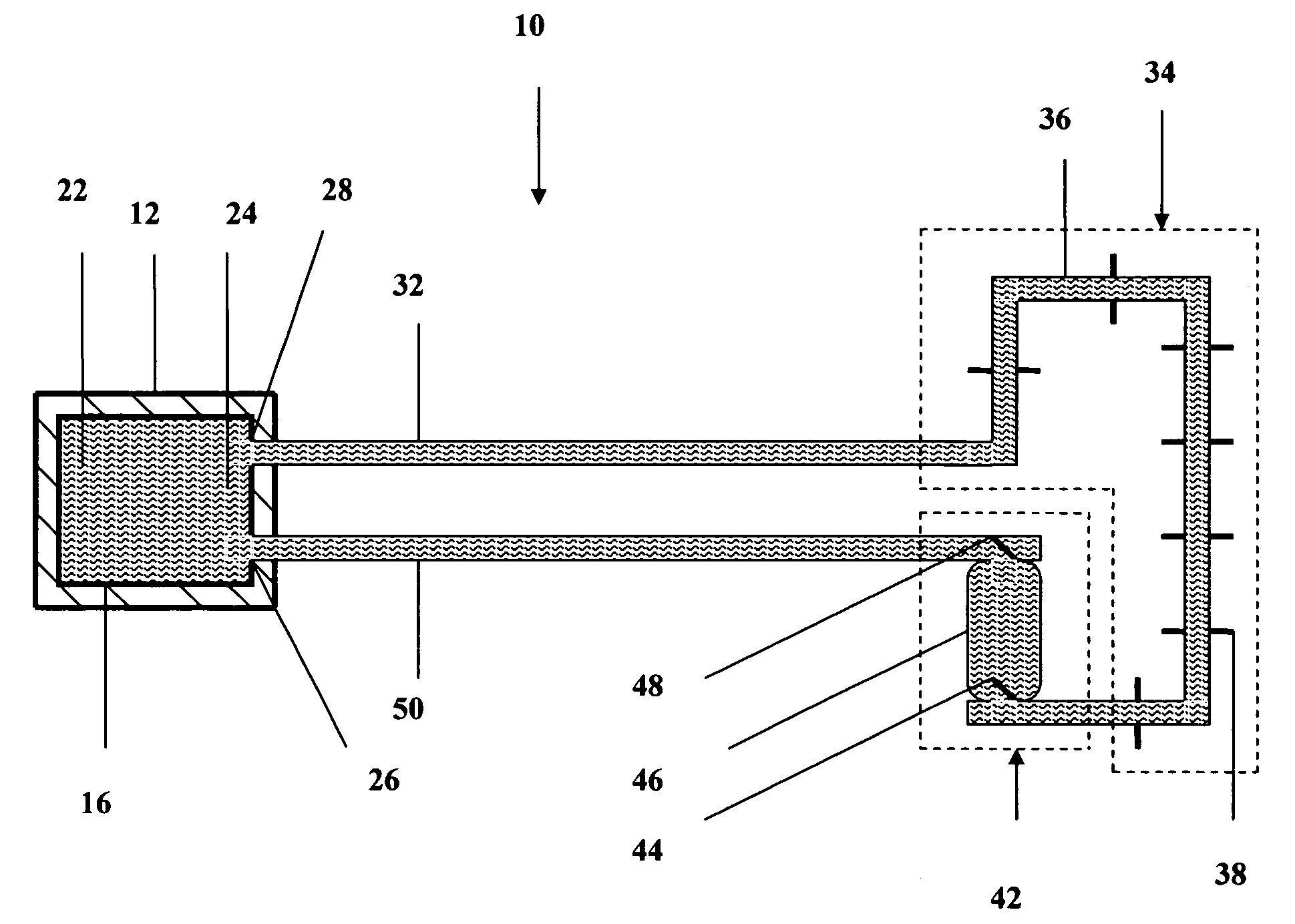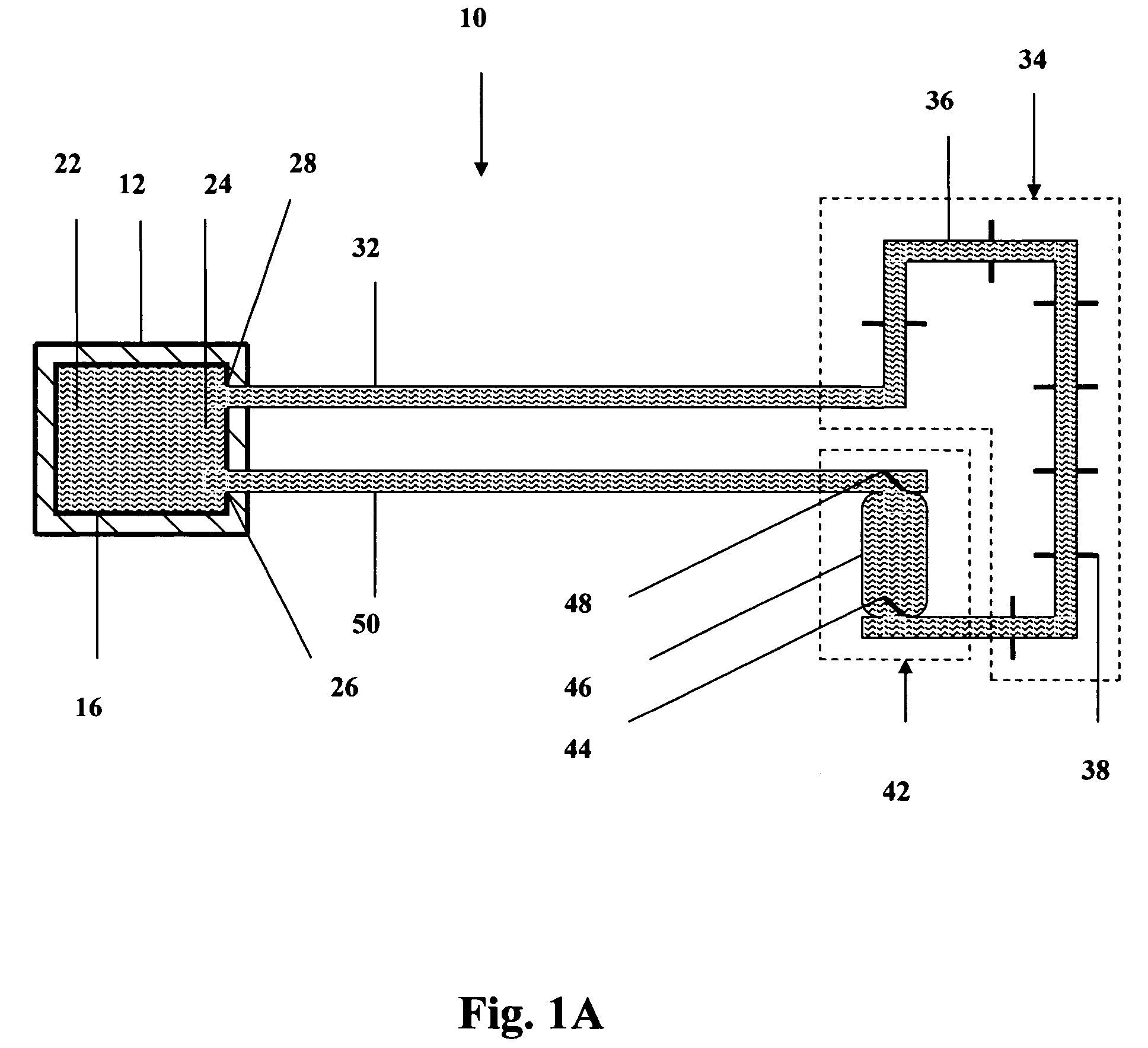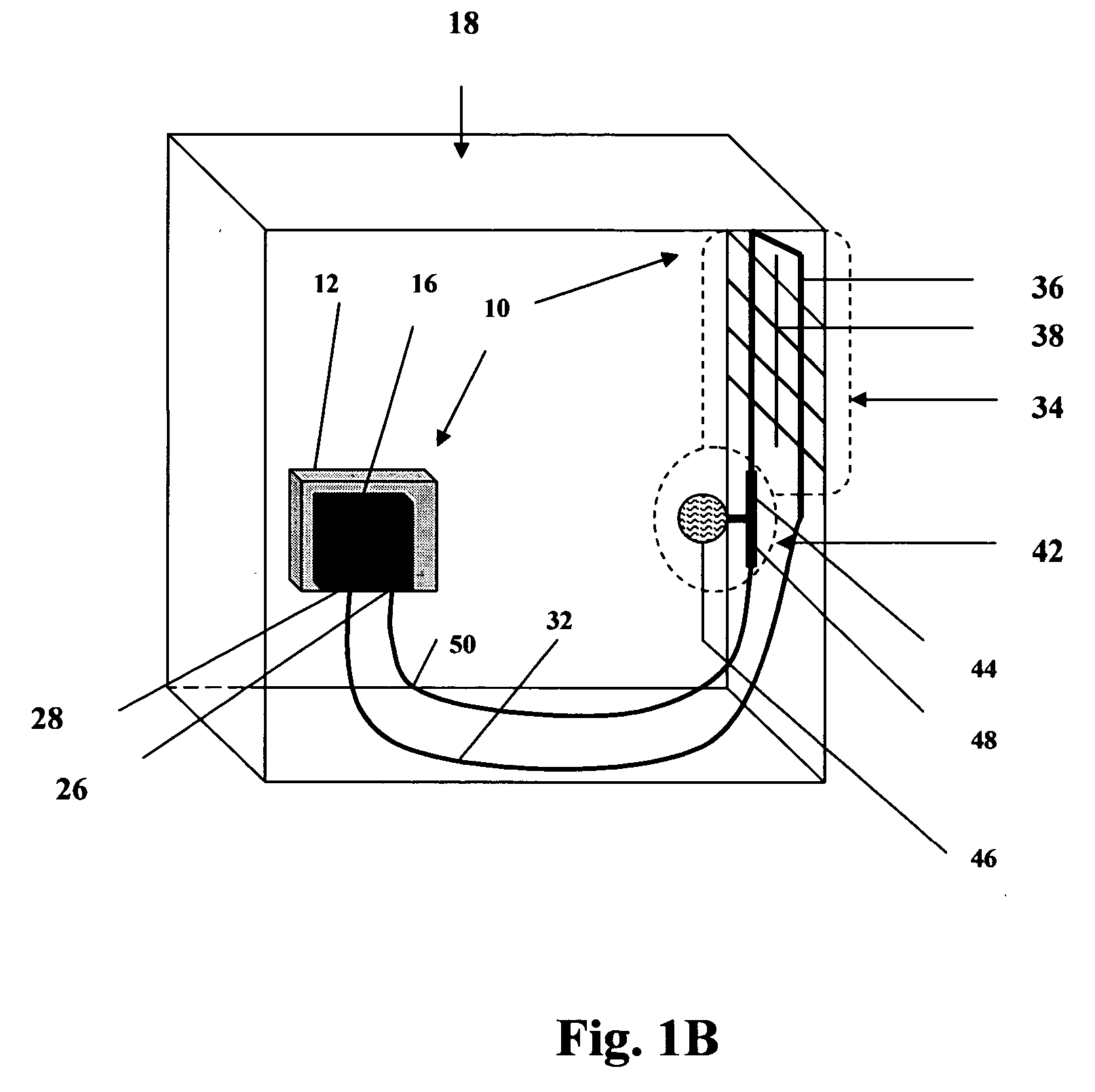Self-actuating and regulating heat exchange system
- Summary
- Abstract
- Description
- Claims
- Application Information
AI Technical Summary
Benefits of technology
Problems solved by technology
Method used
Image
Examples
Embodiment Construction
[0037] A preferred embodiment of the present invention is a heat exchange system and method suitable for use in a variety of applications where maintenance of temperature in an operational component is desirable. A particularly preferred embodiment, adapted for use with semiconductor chips is shown in the several figures of the drawing and is designated by the general reference character 10. One of the intentions of the present invention is to use in electronic and circuit board applications. The applicability of the present invention either for cooling an electronic chip, or cooling any other hot devices are very similar, even though for simplicity to describing, electronic chip is repeatedly mentioned.
[0038] Referring now to FIG. 1A and FIG. 1B are tow different views of the preferred embodiment of the heat exchange system 10 is shown in a stylized illustration. Refer to FIG. 1B, the system 10 is adapted for use with an electronic component-box 18 and is illustrated as mounted on...
PUM
 Login to View More
Login to View More Abstract
Description
Claims
Application Information
 Login to View More
Login to View More - R&D
- Intellectual Property
- Life Sciences
- Materials
- Tech Scout
- Unparalleled Data Quality
- Higher Quality Content
- 60% Fewer Hallucinations
Browse by: Latest US Patents, China's latest patents, Technical Efficacy Thesaurus, Application Domain, Technology Topic, Popular Technical Reports.
© 2025 PatSnap. All rights reserved.Legal|Privacy policy|Modern Slavery Act Transparency Statement|Sitemap|About US| Contact US: help@patsnap.com



